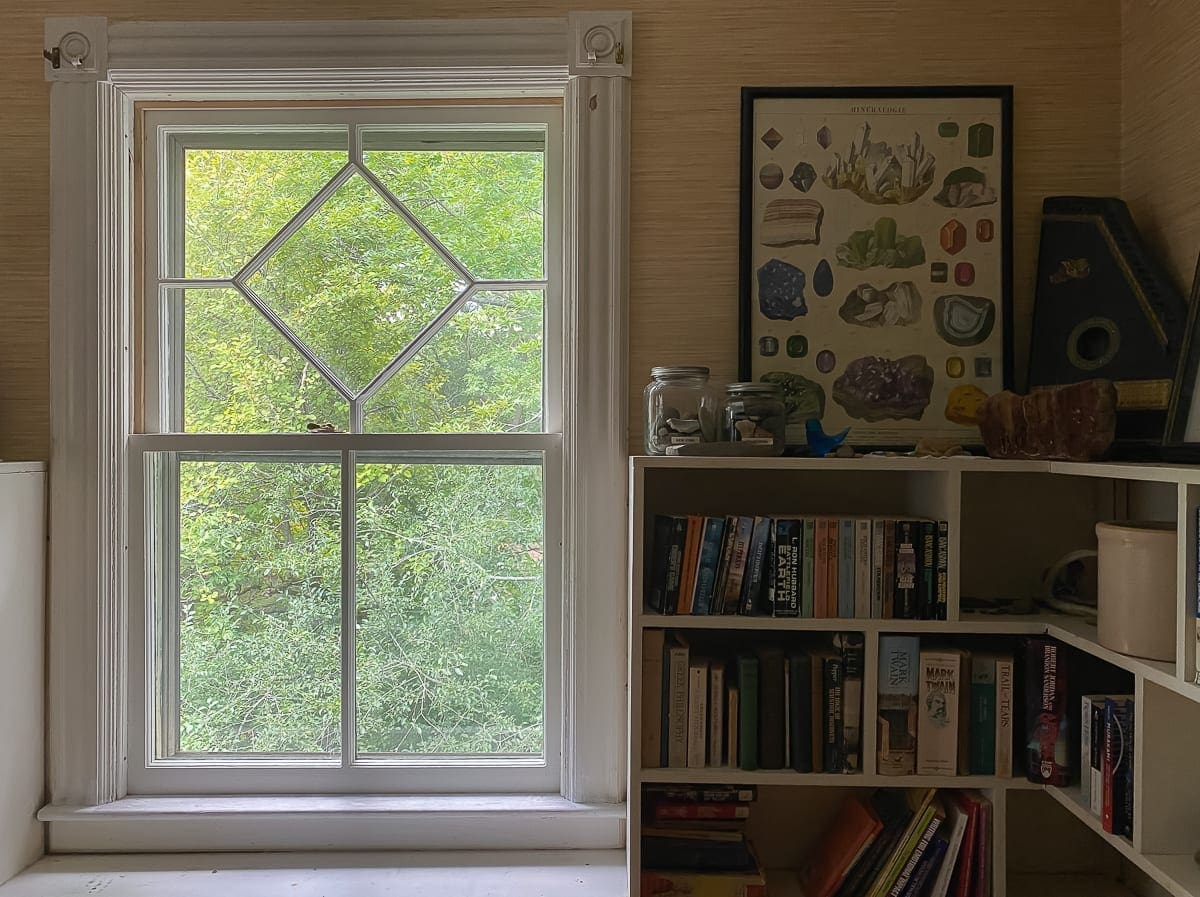Every summer for the past three years, I’ve been taking a few of my friend Bob’s windows to repair. It’s a long story about why I’m repairing windows for someone else when I’ve got about 100 of my own to finish here at BHH. The story includes Bob being pressured by his neighbors to replace his windows and a subsequent insane quote for doing so. Incidentally, saying I have 100 windows is not hyperbole. I have 104, to be exact. Anyway, I still have three of his storm windows down in my workshop. I should have been done with them months ago, but 2022 was a year of adjusting to a new normal. I traveled and taught a lot more than usual.
If you’ve been reading here for some time, you might remember that Bob is the one who has a basketball court above his detached garage. Old houses are so quirky and cool. Even though Bob’s a year or two past 70 now, he’s very young at heart.

Before I stepped in to help, Bob had hired someone to repair some of his windows, and they did an appalling job. Instead of glazing putty, the handyman used unpaintable silicone caulk spread clumsily with a sausage-sized finger. The paint job failed within a few years, and he never addressed any rot or broken glass sections. Typically, I offer plenty of grace to people. However, Bob paid for this work and did not get what he was promised.
I can’t possibly think of doing one more thing here at BHH until Bob’s windows are back at his house. As of today, all the glass has been removed, and they’ve been stripped, sanded, and primed.
Wicket Panes
One fun and interesting thing about Bob’s storm windows is that they contain a wicket pane, a small swiveling window within a fixed window. Wicket panes are common in old metal windows but are rarely used in wood windows. Here’s an example of a wicket pane in an old factory:

And here’s Bob’s storm window. The bottom corner placement of a wicket pane is also unusual.

Many years ago, pre-handyman, the wicket panes on Bob’s windows were rendered inoperable. It’s a head-scratcher of a situation because I’ve found his storm windows nailed in, affixed with turn bolts, and even hanging from hinges on the side like a casement. His house was built around 1910. So, I surmise the storms have been modified over the years according to the wishes of the various owners.
Questionable Choices
Bob told me he hasn’t touched the storm windows besides painting, and it seems the previous owners’ focus was sealing up the house against drafts and closing the wicket panes for good. However, in his effort to reduce the utility bills, they created a hazardous situation in an emergency. A couple of summers ago, Bob had a serious heat-related incident. No one knew he couldn’t open any of the upstairs windows. Without ventilation, it was likely pushing 100 humid degrees upstairs where he was sleeping.
While Bob was in the hospital, his daughter called me to see if I could help. When I went over to open the windows, I realized the extent of the danger. Most of the sashes were inoperable or needed a pro wrestler’s strength to open them, and the fixed storm windows made them useless anyway. In case of an emergency, such as a fire, Bob had no way to get to safety from the second floor. So, I spent that summer tuning up windows and crafting an evacuation plan for him. I’m happy to report that at least one window easily opens in every upstairs bedroom. Also, the coordinating storm windows now swivel out from newly-installed hinges on top.
What’s Left?
Before I can get Bob’s storm windows out of my workshop, I need to add trim around the wicket pane, glaze, and paint them. That doesn’t sound like much, and it isn’t. However, each step always takes a little longer than I think it will. My goal for this weekend is to reach the glazing stage.
I’m making a decision on each wicket pane separately. They aren’t essential, but it’s always hard for me to skip bringing something back to as close to the original as possible. Restoration work is fun and rewarding, especially on a project like this one.
Have a great weekend, and if you ever need a window consultation or help session, please feel free to schedule a call. I’m here to help.





